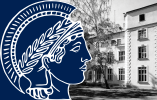Kojevnikov, Alexei: "Knabenphysik": The birth of quantum mechanics from a postdoctoral viewpoint
The majority of initial contributions to quantum mechanics between 1925 and 1927, as is well known, came from younger students of physics under the age of 30. It is thus worth analyzing historically how the quantum revolution and the emerging new discipline looked from the perspective of not a professor, but a recent or actual Ph.D. student just embarking on an uncertain academic career in economically hard times. Temporary assistantships, postdoctoral positions and their equivalents were the chief mode of existence for young academics during the period. Using newly obtained documents from the Rockefeller Archives and other collections, the paper describes the policies for distributing such fellowships and the resulting varying patterns of postdoctoral traffic to the main centers of quantum physics: München, Göttingen, Copenhagen and Berlin. By following the work of several students, such as Pauli, Heisenberg, and Jordan, who moved between various centers of research, it is possible to see how the transitory postdoctoral way of life influenced their choices between rival approaches in the field and important problems to handle. Insecure career trajectories and unpredictable moves through non-stable temporary positions thus contributed to the general outlook and interpretation of the emerging theory of quantum mechanics.






 Kojevnikov (Presentation)
Kojevnikov (Presentation)